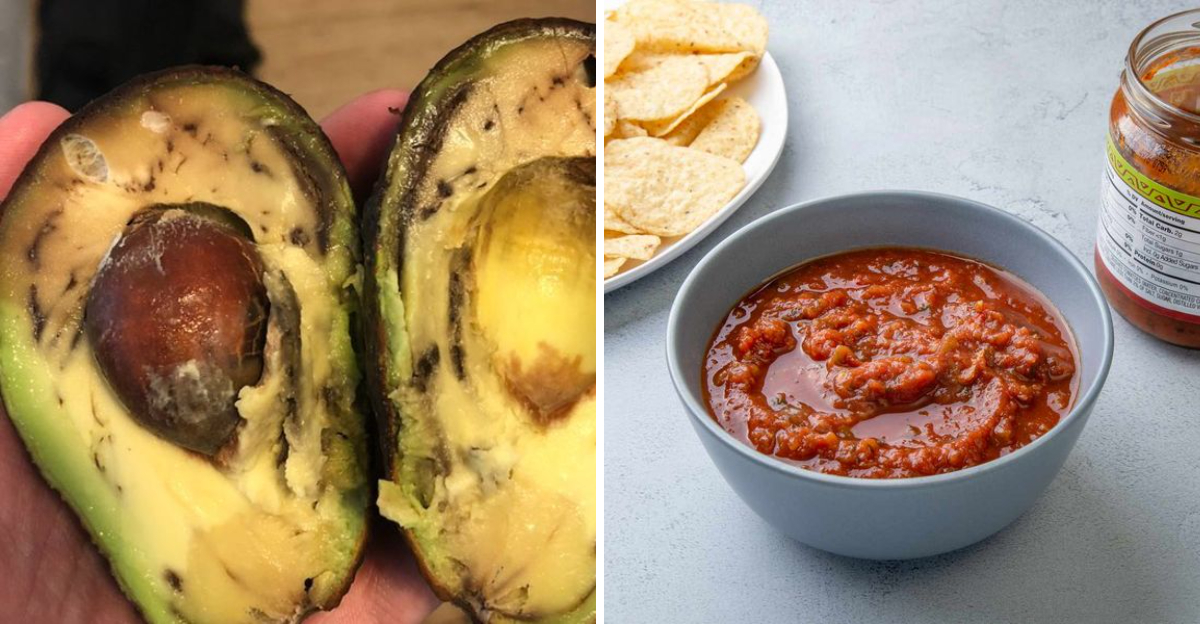18 Surprising Items In Your New York Fridge That Should’ve Been Tossed Yesterday

Your refrigerator could be hiding some seriously questionable science experiments disguised as forgotten food, especially in cramped New York apartments where every inch of fridge space is precious and chaos often takes over.
If you’re not careful, those leftovers and forgotten containers can turn into something you definitely don’t want to discover. Keep reading to find out what’s probably gone bad and needs to be tossed before it’s too late!
1. Cottage Cheese Containers
That innocent-looking tub can turn sour faster than you can say “breakfast.” Even when properly sealed, cottage cheese develops an off smell and watery texture before the date on the package.
The high moisture content makes it a playground for bacteria. When you spot any discoloration or detect a sour odor that’s stronger than usual, it’s time for immediate disposal.
2. Flavored Yogurt Cups
Fruit-on-the-bottom cups deteriorate quicker than their plain counterparts. The added sugars and fruit pieces accelerate fermentation, creating a breeding ground for unwanted microorganisms.
Yesterday’s perfectly fine strawberry yogurt might be today’s bloated, bubbling mess. Check for excessive liquid separation, off colors, or unusual smells, all telltale signs it’s beyond salvaging.
3. Shredded Cheese Bags
Sneaky mold loves hiding between those convenient pre-shredded strands. The increased surface area from shredding makes it particularly vulnerable to spoilage, even when it looks fine at first glance.
Anti-caking agents only do so much. Dig deeper into that half-used bag, you might find green or white spots lurking inside. Once mold appears, the entire bag needs to go.
4. Hard-Boiled Eggs
Many New Yorkers meal-prep these protein powerhouses without realizing their short shelf life. That batch you made last weekend? Probably past its prime now.
Even refrigerated, hard-boiled eggs only last about a week. Peeled ones deteriorate even faster. When the yolk develops a greenish-gray ring or the whites smell sulfuric, it’s definitely time to say goodbye.
5. Bagged Salad Mixes
Found that half-used arugula blend hiding behind your oat milk? One slimy leaf contaminates the whole bag faster than you’d think.
Pre-washed greens break down quickly once the package is opened. The moisture trapped inside creates perfect conditions for bacterial growth. When leaves turn dark, mushy, or develop that unmistakable rotting smell, it’s compost material.
6. Pre-cut Fruit Containers
Those convenient Whole Foods fruit cups start deteriorating the moment they’re prepared. Cutting exposes the flesh to oxygen and bacteria, dramatically shortening shelf life compared to whole fruits.
Ever notice the liquid pooling at the bottom? That’s cellular breakdown in action. When fruit pieces look mushy, discolored, or smell fermented rather than fresh, they’ve crossed into the danger zone.
7. Limp Celery Stalks
Remember buying that celery for a recipe weeks ago? Now it’s bendy enough to tie in knots. While not technically unsafe, limp celery has lost most of its nutritional value and crisp texture.
The moisture has evaporated, leaving sad, rubbery stalks. When celery turns yellow or develops brown spots along with that characteristic limpness, it’s contributing nothing to your cooking except disappointment.
8. Cut Avocados
Half an avocado wrapped in plastic might seem salvageable, but appearances deceive. Once cut, avocados oxidize rapidly, turning brown, stringy, and bitter within days.
That brown layer isn’t just unsightly; it signals deterioration throughout. When the green flesh develops dark streaks or an off smell, your guacamole dreams are over. Better to use the whole fruit at once than waste half.
9. Opened Salsa Jars
That half-empty jar from taco night is a ticking time bomb. Commercial salsas contain preservatives but still deteriorate quickly once opened and exposed to air.
Watch for bubbling, unusual separation, or mold growth around the lid’s edge. The acidity only provides so much protection. When the bright colors fade or a fermented smell develops, it’s definitely trash-bound.
10. Mayonnaise Containers
Contrary to popular belief, mayo doesn’t last forever. The egg content makes it particularly susceptible to spoilage even when refrigerated.
Quality deteriorates long before visible mold appears. Watch for separation, yellowing, or an off smell that’s more sour than usual. Cross-contamination from dirty utensils accelerates spoilage, so that glob that touched your tuna might have compromised the whole jar.
11. Pesto Sauce Jars
Fresh basil-based pesto transforms from vibrant green to a murky brown disappointment faster than you’d expect. The oil separation on top isn’t necessarily bad, but discoloration throughout signals oxidation.
Even with a layer of olive oil for protection, opened pesto deteriorates quickly. When the bright herbaceous aroma fades to something dull or slightly sour, it’s past its prime and ready for disposal.
12. Pickle Jars
Yes, even pickles go bad! While vinegar preserves them initially, once opened, the clock starts ticking. Cloudy brine is your first warning sign that something’s amiss.
Properly stored pickles should maintain their crunch. When they turn mushy or develop a slippery film, bacteria have moved in. The vinegar smell should be clean—any funky or yeasty odors mean it’s time for immediate disposal.
13. Chinese Takeout Rice
Bacillus cereus bacteria love leftover rice, making it one of the riskiest leftovers in your fridge. Even refrigerated, cooked rice becomes a bacterial playground after just 1-2 days.
That innocent-looking white carton from your delivery order? Potentially dangerous territory. The dry, hard texture isn’t just unappetizing; it’s a warning. When rice develops a strange smell or unusual stickiness, it’s definitely garbage-bound.
14. Leftover Pizza Slices
The breakfast of champions becomes a microbiological hazard after 3-4 days. That cardboard box offers minimal protection against contamination and moisture loss.
The cheese develops a rubbery texture while toppings like vegetables wilt and dry out. When the edges curl and harden or spots of mold appear, your midnight snack has become a science experiment. Better to order fresh than risk questionable slices.
15. Deli Meat Packages
Fresh-sliced meats from the corner bodega deteriorate faster than you’d think. The large surface area exposed during slicing makes them particularly vulnerable to bacterial growth.
The slimy texture that develops isn’t just unappetizing, it’s a warning sign. Even before visible slime appears, a sour or fermented smell indicates spoilage. When the color changes from vibrant to grayish or brown, it’s definitely time for disposal.
16. Opened Hummus Containers
Hummus harbors hidden dangers beneath its creamy surface. Mold often starts growing under the lid or around the edges where you might not immediately notice.
The high moisture and protein content creates an ideal environment for spoilage. Watch for any discoloration, unusual separation, or sour smell. When the fresh, nutty aroma turns funky or the texture becomes watery, it’s definitely past its prime.
17. Cold Brew Coffee Bottles
That artisanal cold brew doesn’t maintain its smooth flavor profile forever. After about a week, quality noticeably deteriorates even if it remains technically safe to drink.
The bright, complex notes fade into a flat, sometimes acidic disappointment. When you notice increased bitterness, separation, or any off smells that weren’t present initially, it’s time to brew a fresh batch rather than suffer through stale coffee.
18. Eggnog Cartons
Seasonal eggnog deserves special caution due to its rich dairy content and minimal preservatives. Even commercial versions spoil surprisingly quickly once opened.
The high sugar content masks early spoilage signs, making it particularly risky. Watch for unusual thickness, separation, or any sour notes in the aroma. When the creamy texture turns chunky or the spiced vanilla fragrance develops an unpleasant edge, it’s definitely time for disposal.






